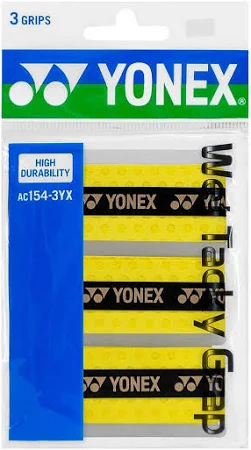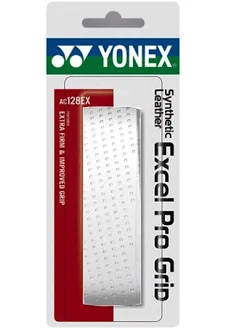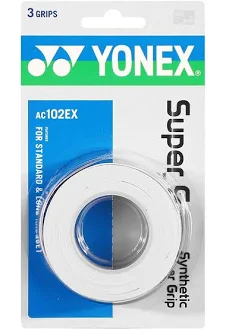Grip choice affects comfort, control and injury risk. This guide covers grip materials, sizing, how to hold and switch grips during play, plus maintenance and recommendations illustrated with example images.
Types of Grips

Thin, tacky, good feel and sweat absorption; commonly used as an outer layer.

Softer and absorbs sweat well — popular for hot conditions and for players who prefer thicker feel.

Thicker base grips that replace the handle wrap — used to adjust base thickness before overgripping.
Grip Size & Thickness
Grip thickness affects wrist action and control. Thinner grips allow quicker wrist movements, while thicker grips increase stability and comfort. Unlike tennis, badminton commonly adjusts thickness via overgrips or replacement grips rather than fixed numbered sizes.
How to Hold: Forehand & Backhand Basics
Forehand Grip
Hold the racket as if shaking hands; the V between thumb and index finger points slightly to the right of the frame (for right-handed). Keep a relaxed wrist.
Backhand Grip
Rotate the racket slightly towards the thumb — bring the thumb up the handle to provide support for backhand flicks and blocks.
Grip Change
Practice quick micro-rotations of the racket in the fingers to switch between forehand and backhand without re-gripping fully.
When to Use Each Grip Type
- PU overgrip: everyday play; good balance of tack and durability.
- Towel grip: humid conditions or if you sweat heavily.
- Replacement/thicker base: for players who prefer a permanently thicker handle.
Maintaining Your Grip
- Replace overgrip when tackiness or sweat build-up decreases — typically every 4–8 weeks depending on use.
- Keep spare overgrips in your kit; swap quickly between sessions for consistent feel.
- Clean towel grips occasionally by hand-washing and air-drying to restore absorption.
Common Mistakes
- Using an overly large grip thickness that restricts wrist turnover.
- Leaving worn grips which reduce control and increase slippage.
- Over-tightly wrapping overgrip causing discomfort and reduced suppleness.
Recommended Products (Examples)

PU Overgrip
Thin, tacky and popular among tournament players.

Towel Grip
Excellent for humid conditions and heavy sweaters.

Replacement Wrap
Use to adjust base thickness before adding an overgrip.
Quick Tips for Choosing
- Test a racket with your preferred overgrip before committing to a thicker replacement grip.
- If you play doubles and rely on fast wrist action, favour thinner grips or thinner overgrips.
- If you develop blisters or wrist discomfort, try adding a thin overgrip first — then adjust thickness gradually.